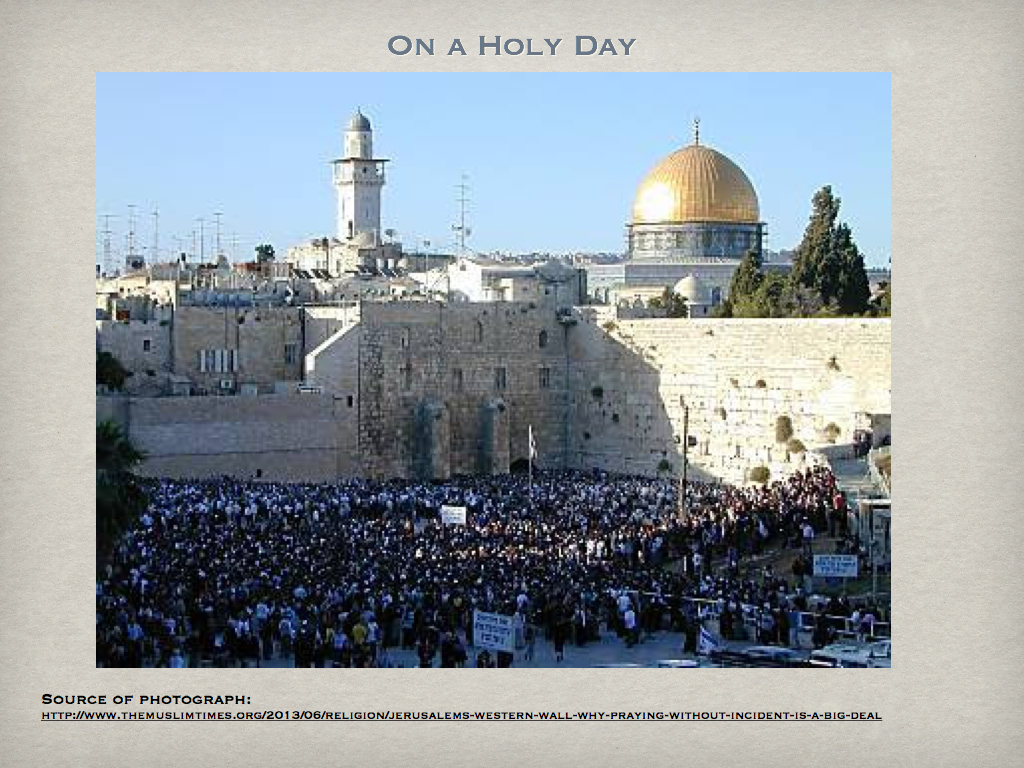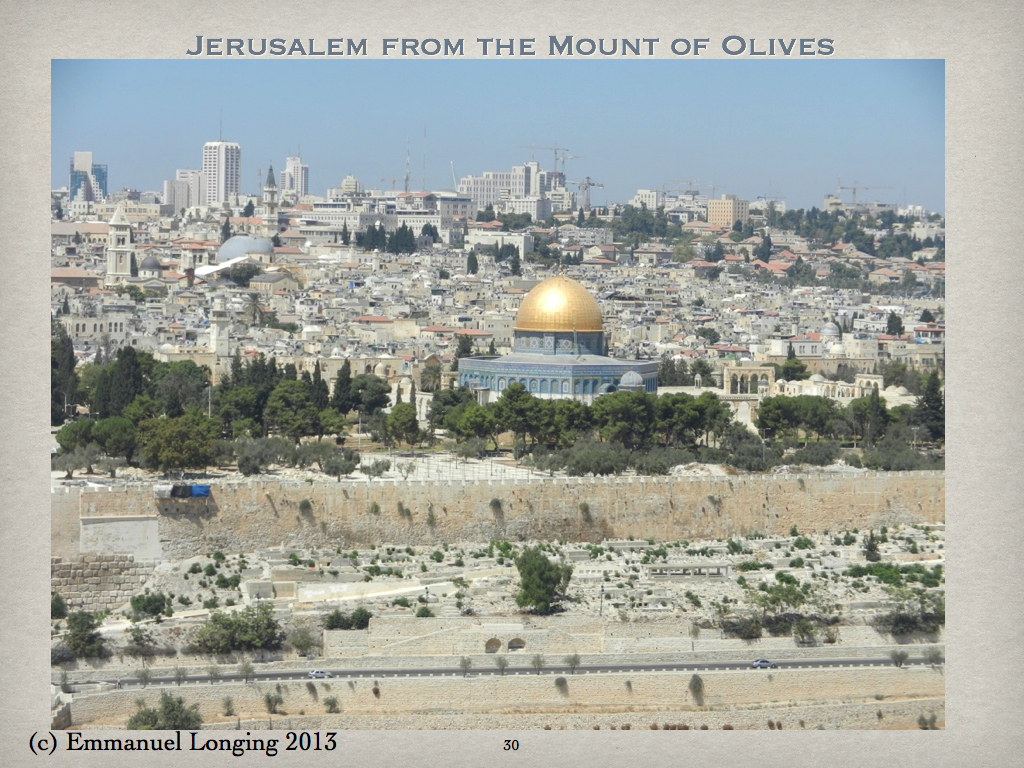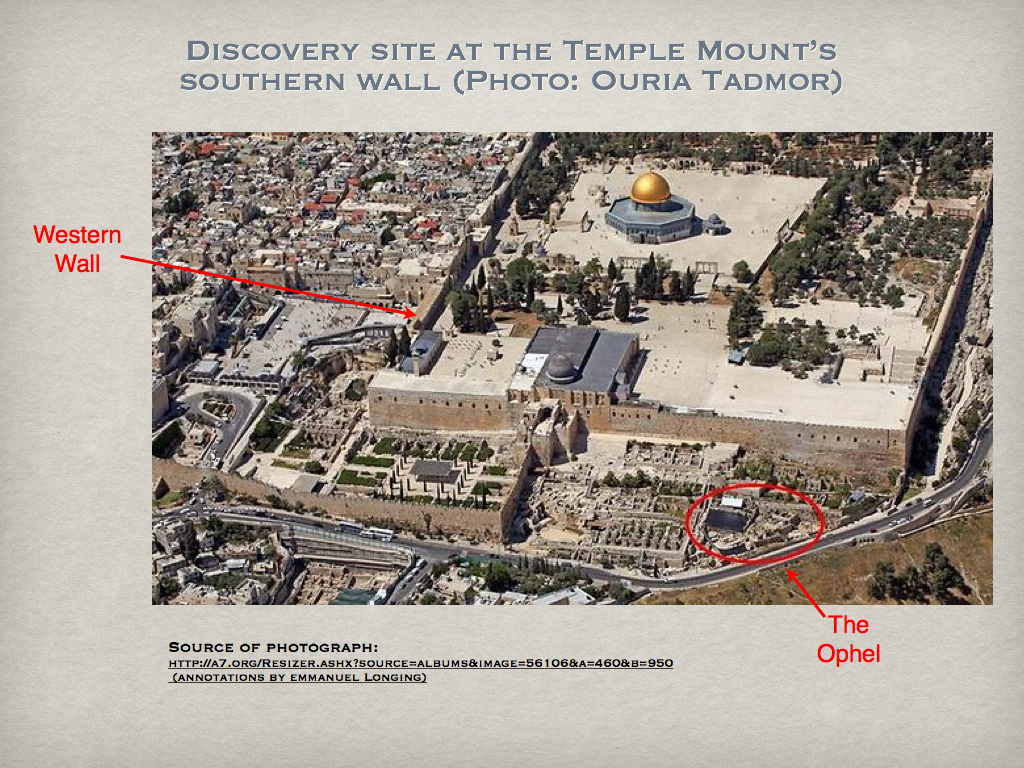The first place where God elected to place His name was a portable, tent-like structure referred to in the Bible as the Tabernacle. As shown below, this served as the ‘home’ of the Name of YHWH (the Lord) for about 500 years. The permanent structure, known as The Temple, was designed by King David and built by his son King Solomon sometime after 1000 B.C.. The Temple, with its Western Wall, was then the center of Israel’s worship for the term of Solomon. Upon his death, the kingdom was divided into the Northern 10 tribes, thereafter referred to (confusingly) as “Israel” (sometimes “Samaria,” and “Ephraim”), while the Southern two tribes became “Judah.” The Northern Kingdom of “Israel” formally rejected the worship of YHWH in Jerusalem, by initiating a formal worship of idols. The Southern Kingdom of “Judah” formally continued its worship at the Temple in Jerusalem; however, idol worship crept into the Southern Kingdom as well. As shown below, the Northern Kingdom were exiled from the Promised Land by the Assyrian conquerors (in about 720 B.C.). The Southern Kingdom lasted another ca. 130 years during which time it cycled through apostasy, repentance, restoration, back to apostasy, until finally there was no repentance available, and these peoples likewise went into exile but to the Babylonians. This latter exile resulted in the destruction of Jerusalem and the Temple as shown below. Seventy years after the exile of the Southern Kingdom God ordained a return to the Promised Land under the reign of the Persian King Cyrus who had, during the exile period, conquered Babylonia. This return under Zerubbabel, Ezra, and Nehemiah, resulted in a rebuilding of the Temple and the walls of Jerusalem.
Seventy years after the exile of the Southern Kingdom God ordained a return to the Promised Land under the reign of the Persian King Cyrus who had, during the exile period, conquered Babylonia. This return under Zerubbabel, Ezra, and Nehemiah, resulted in a rebuilding of the Temple and the walls of Jerusalem.
Many years later, in the first Century before Christ, there was a major rebuilding campaign initiated under the reign of King Herod the Great. This long building program (46 years!) expanded and beautified the structures on the Temple Mount. At the time of Christ, these structures were a source of Jewish pride, grounded in the grounds and buildings in this physical world. As Christ foretold, in just one generation all the glory of those physical structure would be destroyed by a Roman army (under General Titus, in 70 A.D.). Since that time, and especially after a later Roman army put down yet another Jewish rebellion (Bar Kochba revolt 132 – 135 A.D.), there has been no Temple and no Temple worship on what is still referred to as the “Temple Mount.” In the centuries since that time the ‘mount’ of the Temple Mount has been completely scraped and reshaped such that there is no longer any trace of where the Temple stood. So today there is no Temple nor is there even a ‘Mount’ on the “Temple Mount.”
Today, the Temple Mount contains an Islamic Mosque (known as Al-Aqsa, or Haram al-Sharif) and the Islamic shrine known as the Dome of the Rock boldly visible by a golden dome in the below photographs. The picture directly below is an elevated view of the Western Wall on a holy day with a large crowd awaiting their turn to approach the Wall; above and behind the Wall lies the Muslim Dome of the Rock on the Temple Mount. Below is a view of the Temple Mount (and modern Jerusalem in the background) taken from the Mount of Olives looking West across the Kidron Valley. The Dome of the Rock is clearly visible, dominating the view by the gold leaf dome.
Below is a view of the Temple Mount (and modern Jerusalem in the background) taken from the Mount of Olives looking West across the Kidron Valley. The Dome of the Rock is clearly visible, dominating the view by the gold leaf dome. Shown below is an Aerial view, looking West from above the Mount of Olives (shaded by the light red oval) of the Temple Mount, highlighted by the Dome of the Rock. To the left of the picture in the area of the light blue oval is the ancient City of David.
Shown below is an Aerial view, looking West from above the Mount of Olives (shaded by the light red oval) of the Temple Mount, highlighted by the Dome of the Rock. To the left of the picture in the area of the light blue oval is the ancient City of David. Below is another aerial view but from the South side of the Temple Mount. The Western Wall is shown by the arrow on the left. An elevated area under active archaeological investigation is the “Ophel,” an elevated section just below the South-Eastern corner of the Temple. Midway between these two landmarks is a grayish structure on the Temple Mount which is the Muslim Mosque.
Below is another aerial view but from the South side of the Temple Mount. The Western Wall is shown by the arrow on the left. An elevated area under active archaeological investigation is the “Ophel,” an elevated section just below the South-Eastern corner of the Temple. Midway between these two landmarks is a grayish structure on the Temple Mount which is the Muslim Mosque. What happened at that critical period during which Jesus Christ presented Himself as the God-Man Messiah, the Promised One of the Old Covenant? We of course know that he was rejected by National Israel who, in union with the Roman rulers put Christ to death, even the death of the Cross. How did National Israel miss seeing Him as the Christ? In the next pages, we will consider three causes.
What happened at that critical period during which Jesus Christ presented Himself as the God-Man Messiah, the Promised One of the Old Covenant? We of course know that he was rejected by National Israel who, in union with the Roman rulers put Christ to death, even the death of the Cross. How did National Israel miss seeing Him as the Christ? In the next pages, we will consider three causes.